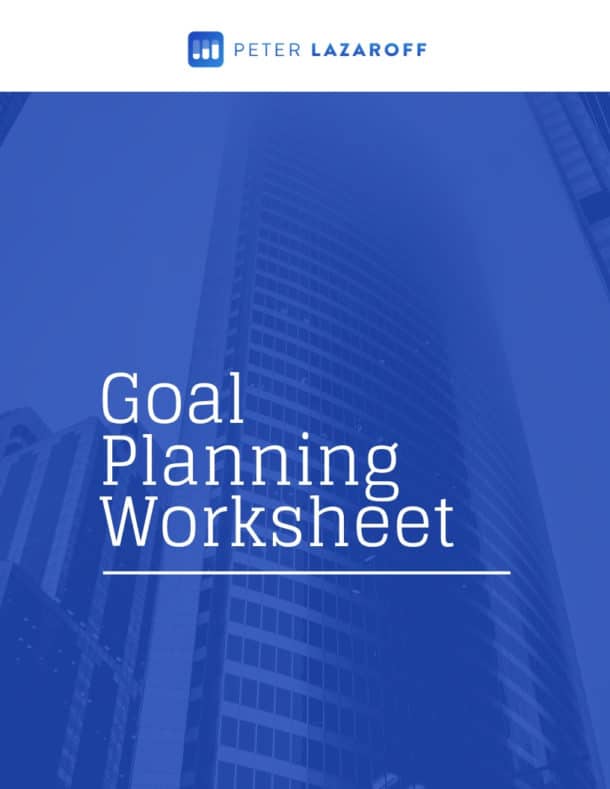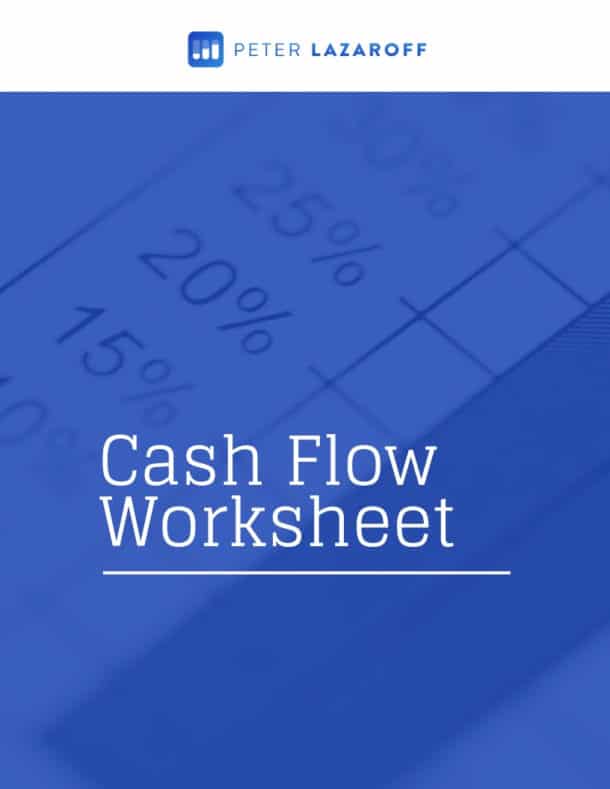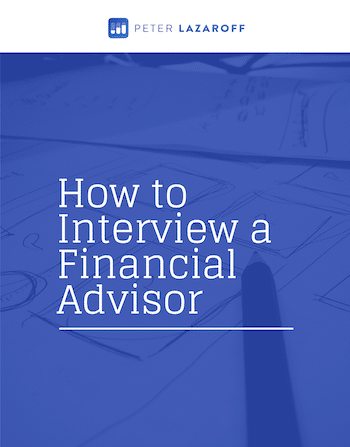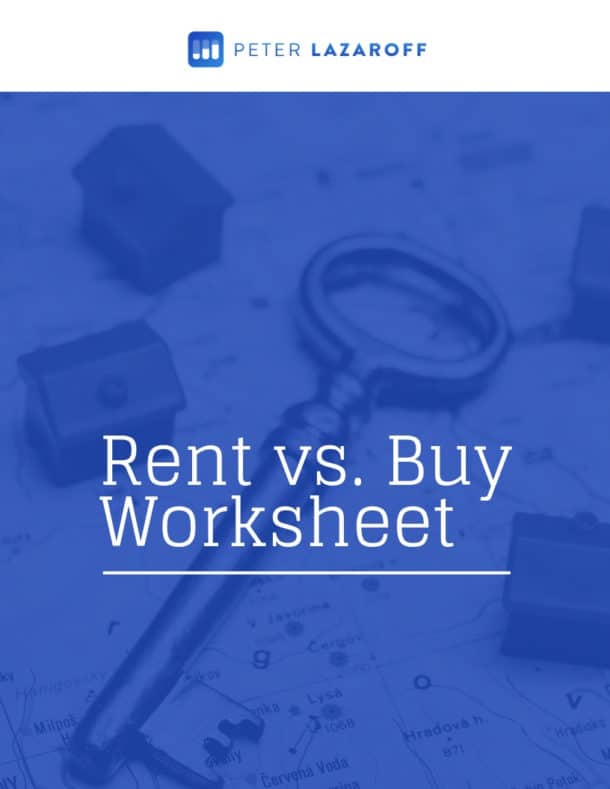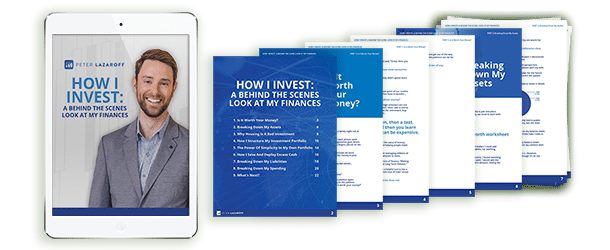Knowing that you are going to experience market losses can help you mentally prepare and make better decisions.
In this episode, I explain how performing a safety net analysis can give you an additional layer of emotional comfort during a market downturn.
Listen now and learn:
- The 4 steps to performing a safety net analysis
- Best practices for putting the analysis into practice
- How long you can withstand a downturn given your current situation
Listen Now
Show Notes
One of the first things to accept as an investor is that you will occasionally lose money – sometimes a lot of money – on the way to earning a decent return in stocks. You should always expect the market to take unpredictable twists and turns throughout your lifetime.
When one of the inevitable drops occur, you can expect the financial media to dramatize everything, making it even harder to stay calm and rational.
Smartphones and the Internet also pose a threat by providing easy access to real-time data, which can make you susceptible to mentally shrinking your time horizon when you see losses, and losing sight of the big picture.
It’s Human Nature to Be Fearful When the Market Drops
When the market goes down, our human fear instinct kicks in and makes us feel the need to do something. When our ancient ancestors heard a rustle in the bushes, they ran out of fear.
They didn’t have to time to calculate the probability that the noise in the bushes was a lion. If it was, taking the time to think about it posed too much of a risk of being pounced on. Better to get away first and evaluate later.
Thankfully, most of us no longer need to worry about being hunted down by lions – but that instinct to react when we feel afraid or threatened remains.
That makes it tough to not react when we get spooked by the stock market. But I’ve always felt that knowing how ugly things can get and understanding your short-term desire to react emotionally is essential to sticking with a long-term investment plan.
Plan to Manage Emotional Volatility with a Safety Net Analysis
Like Mike Tyson once said: “Everyone has a plan until you get punched in the face.” Knowing that you are going to get punched in the face, literally or figuratively, isn’t fun. But it does allow us to mentally prepare ourselves so that we can make better decisions after taking a right hook from Mr. Market.
Understanding that losses are normal addresses the cognitive portion of our preparation for the inevitable, but I’d like to suggest an exercise that appeals to the emotional response you may experience: and that is a safety net analysis.
A safety net analysis allows you to understand how long you can withstand a downturn given your current situation and what changes might be appropriate in a particular market environment.
Two important things to note:
- First, this is an exercise in behavioral management and is not designed to be used as a portfolio strategy. I’ll get into best practices after walking through the four steps, but I wanted to make that clear from the start.
- Second, this is an exercise that is most relevant for people living off their portfolio, specifically retirees, but I’ll share what this all means for listeners that aren’t retired as part of my discussion of best practices.
With those two points in mind, here’s how to run a safety analysis for your own financial life.
Step 1: Determine Annual After-Tax Expenses
To know your safety net number, you need to know your total after-tax expenses. If you have multiple years of spending data, then take the average of your annual expenditures from the past three years.
If you haven’t been tracking expenses, sign up for an expense aggregator to collect data on how much you spend each year (I link all my credit cards and bank accounts to BrightPlan and Mint). Most bank accounts and credit cards have annual statements you can print off to figure out what you spent in the previous calendar year, too.
As you list your annual expenses for each of the next ten years, don’t forget to adjust future expenses for inflation, which I realize is high at this very moment, but I’d still consider using 3% for your inflation assumption.
Step 2: Make a List of All Income You Expect to Earn Outside Your Portfolio.
Next, total all non-portfolio income you expect to receive over the next decade such as wages, pension payments, deferred compensation, Social Security, rental income, and so on. This is relatively simple if you only have a few recurring payments that don’t change from year to year.
However, many investors have variable income in the years before and after their retirement date. For example, you may not take Social Security immediately upon retiring. You and your spouse may take your benefits in different years.
Or maybe you’re a business owner who starts retirement by receiving payments from the sale of your ownership interest. Perhaps you’ll retire next year, but will be owed income from production in the previous calendar year.
Think carefully about the different sources of your income and list out your projected annual income for each specific year.
Step 3: Estimate a Yield on Your Portfolio
You can get a little creative here, but it’s important to remain conservative.
Let’s pretend that the market has fallen and is never coming back. Take your total portfolio and assume it loses 30% or 40% of its value. A permanent decline of this magnitude is the ultimate doomsday scenario that is highly unlikely – and, thus, keeps the analysis conservative.
Now let’s assume your depressed portfolio value will yield 2% each year, which is not that far off from the current yields on the S&P 500 and 10-year U.S. Treasury.
The assumptions made at this point are meant to simplify the process, but you can get as detailed as you want. For example, when we run a safety net analysis for clients, we apply different degrees of losses, recoveries, and yields to various portions of a client’s asset allocation.
But for the purposes of doing this on your own, I’d lean towards keeping things simple. Especially because it makes it easier to draw from cash and fixed income assets in the next step, if necessary.
Step 4: Add Up Income and Compare to Expenses
Total your expected portfolio income with your outside income, and subtract that amount from your projected expenses in year one.
Ideally, you have enough income to meet your liquidity needs to support your lifestyle. If not, then remove funds from your portfolio to cover the difference between your annual after-tax expenses and total income.
In years that you draw from portfolio assets to meet lifestyle expenses, remember to dial back portfolio income in the following year. If you’ve separated your portfolio by asset class, then draw down on your cash assets first, followed by bonds.
Continue this exercise year by year for ten years. Remember, we built conservative assumptions into this basic model by assuming your entire portfolio declines in value and never recovers. Now we want to know how many years you can last without drawing on your portfolio during a downturn and avoid drawing on stocks at depressed values.
Best Practices For Using a Safety Net Analysis
After living through the Financial Crisis, which was one of the worst downturns since the Great Depression; and, more recently, the sharp decline experienced in March 2020 at the onset of the pandemic, I’ve noticed investors are increasingly nervous about what the current market downturn experience will be. This is particularly true for people in retirement or approaching it, since a market drop can threaten the comforts of their existing lifestyle.
While it’s never fun to see your portfolio take a hit, losses are a normal part of investing. We should spend more time planning for volatility and potential losses than trying to predict when the next downturn will happen.
The basic safety net analysis described above can be further customized to meet reality, but its primary purpose is to plan for downturns rather than predict them by appealing to our emotional part of the brain.
Safety nets don’t come in one-size-fits-all. The average bear market lasts about two years, so that’s a useful starting point. Ideally, you want enough cash and bonds on hand to go several years without needing to touch your equity portfolio.
If your safety net doesn’t seem sufficient, consider having a financial advisor run a Monte Carlo analysis to test the likelihood of meeting your goals without running out of money. This deeper analysis might uncover the need to change your allocation, retirement spending expectations, or time horizon until retirement.
It is extremely important to understand that I wouldn’t use the withdrawal strategy within this exercise and alter a strategic, long-term asset allocation just to avoid selling equities at a loss. The purpose of the analysis is to put the investor’s mind at ease and let them know: Everything is going to be OK.
One final note for people who aren’t retired or living off their portfolio.
That running a safety net analysis doesn’t seem to make sense for you, that says something in and of itself. If you don’t need the money in your portfolio, then the temporary downturn isn’t something that is problematic. In fact, you should be viewing it as an opportunity to buy more at lower prices.
That’s what being a long-term investor is all about.
Until next time, To Long Term Investing!
Submit Your Question For the Podcast
Do you have a financial or investing question you want answered? Submit your question through the “Ask Me Anything” form at the bottom of my podcast page.
If you enjoy the show, you can subscribe wherever you listen to podcasts, and please leave me a review. I read every single one and appreciate you taking the time to let me know what you think.
About the Podcast

Long-term investing made simple. Most people enter the markets without understanding how to grow their wealth over the long term or clearly hit their financial goals. The Long Term Investor shows you how to proactively minimize taxes, hedge against rising inflation, and ride the waves of volatility with confidence.
Hosted by the advisor, Chief Investment Officer of Plancorp, and author of “Making Money Simple,” Peter Lazaroff shares practical advice on how to make smart investment decisions your future self with thank you for. A go-to source for top media outlets like CNBC, the Wall Street Journal, and CNN Money, Peter unpacks the clear, strategic, and calculated approach he uses to decisively manage over 5.5 billion in investments for clients at Plancorp.
Support the Show
Thank you for being a listener to The Long Term Investor Podcast. If you’d like to help spread the word and help other listeners find the show, please click here to leave a review.
Free Financial Assessment
Do you want to make smart decisions with your money? Discover your biggest opportunities in just a few questions with my Financial Wellness Assessment.










